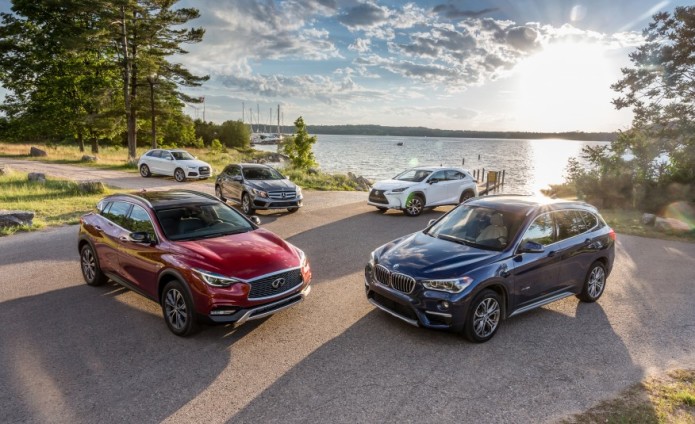Just as LeBron James, the Cleveland Cavalier forward, is far more likable than LeBron James, the Miami Heat forward, a hatchback called a crossover trumps a two-box vehicle by any other name. It’s a matter of selling perception as much as a tangible product, and Americans have fully bought in.
With the crossover elbowing out the sedan as the vehicle of choice for the everyman, the smallest, most affordably priced premium utes now serve as the entrée to luxury-brand ownership. Simultaneously, the perpetual upward trajectory of vehicle sizes and prices has left a gaping hole for a class of tiny crossovers below the Audi Q5, the BMW X3, and the Lexus RX. These smallest crossovers start around $36,000, with all-wheel drive optional if not standard and a 2.0-liter turbocharged inline-four the consensus powertrain.
 BMW launched this burgeoning segment in the U.S. in 2013 with the X1, then completely rethought its approach three short years later. While the current X1 is only all-wheel drive (for the time being, at least), its dubious distinction as the first BMW in the States built on a front-wheel-drive architecture riles loyalists who cringe at the inevitability of front-drive BMWs. For this class, though, where driving dynamics take a back seat to comfort, convenience features, and, well, the back seat itself, it’s hard to argue with BMW’s decision. Our test car was loaded with $10,125 worth of options, including a self-parking feature, a Harman/Kardon stereo, and a massive panoramic glass roof for a total of $45,920.
BMW launched this burgeoning segment in the U.S. in 2013 with the X1, then completely rethought its approach three short years later. While the current X1 is only all-wheel drive (for the time being, at least), its dubious distinction as the first BMW in the States built on a front-wheel-drive architecture riles loyalists who cringe at the inevitability of front-drive BMWs. For this class, though, where driving dynamics take a back seat to comfort, convenience features, and, well, the back seat itself, it’s hard to argue with BMW’s decision. Our test car was loaded with $10,125 worth of options, including a self-parking feature, a Harman/Kardon stereo, and a massive panoramic glass roof for a total of $45,920.

…
Read full post here:
https://www.caranddriver.com/reviews/2016-audi-q3-quattro-vs-2016-bmw-x1-xdrive28i-2017-infiniti-qx30-awd-2016-lexus-nx200t-f-sport-awd-2016-mercedes-benz-gla250-4matic-comparison-test


